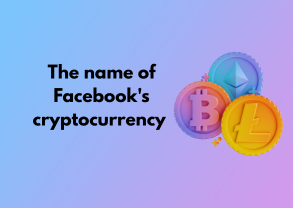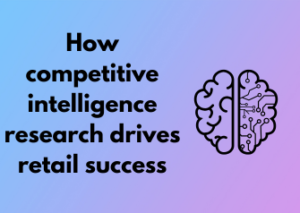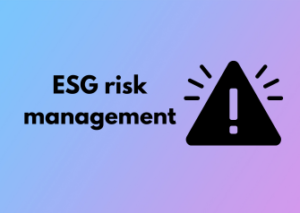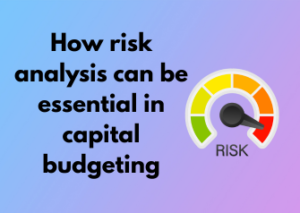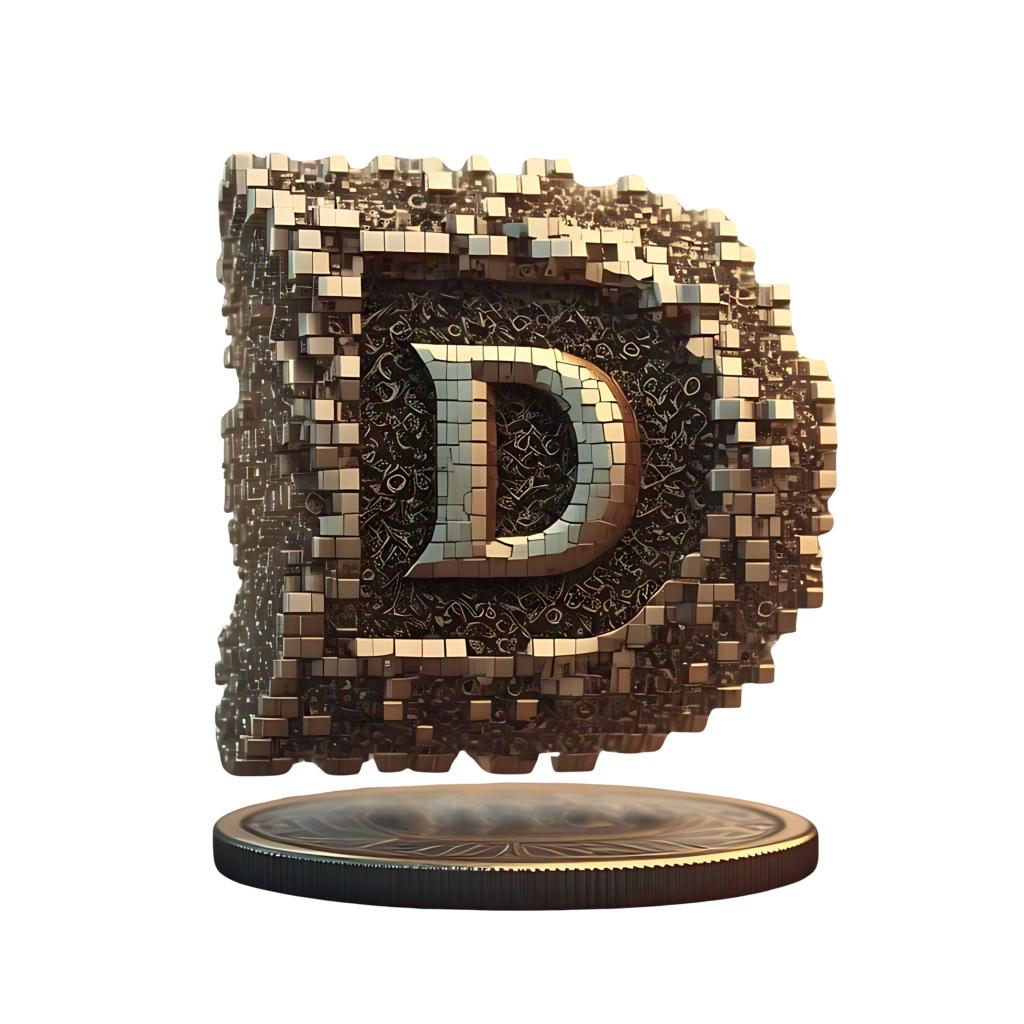Facebook’s journey into the world of digital currency might surprise some people, but when you think about it, was it really that unexpected? This tech giant that effortlessly connects billions of people worldwide has always been about innovation. So, it was only a matter of time before they dipped their toes into the ever-growing pool of digital money. Let’s rewind and look at how it all began.
It was in the late 2010s that Facebook decided to branch out beyond its social media empire and explore new frontiers. With over 2.9 billion monthly active users in 2023, the platform already had an enormous global presence. This meant that Facebook had the perfect infrastructure to introduce a revolutionary method of transferring money—digitally, seamlessly, and worldwide. But, why did Facebook feel the need to step into this new terrain? The answer lies somewhere between ambition and opportunity.
Globally, there are still billions of people who either lack access to traditional banking systems or face challenges managing transactions across different countries. Facebook saw a chance not just to empower these individuals but also to create a lucrative new arm for their business. Imagine a world where sending money across borders could be as simple as sending a friend request or a quick message. That vision is what kickstarted Facebook’s foray into digital currencies.
Why Was It a Bold Move?
Let’s be real: diving into finance is no small feat—especially for a company primarily known for connecting friends and sharing memes. The financial industry is incredibly complex, heavily regulated, and not exactly quick to welcome new players. Still, Facebook’s leadership seemed confident in their vision. They understood the rapidly growing interest in cryptocurrencies—Bitcoin and Ethereum, for instance—had already paved the way. But unlike those decentralized assets, Facebook’s digital money was meant to tackle real-world problems on a broader scale.
- Global accessibility: Facebook wanted a currency that could be used by anyone, anywhere, even in regions where traditional banking systems might lag.
- Social integration: The plan was to deeply integrate the currency into apps like WhatsApp and Messenger, transforming chats into seamless transaction hubs.
- Trust-building: Facebook promised that their currency would be secure, well-regulated, and user-friendly—an apparent step toward bringing cryptocurrencies into the mainstream.
The Team Behind the Dream
It wasn’t just a spontaneous experiment thrown together in a Silicon Valley office. Facebook pulled in some of the brightest minds for this project, forming a dedicated team within a subsidiary called Novi Financial. Alongside its in-house tech geniuses, Facebook partnered with several big names across industries—companies involved in payments, technology, and investments—to create a collaborative ecosystem.
- Their approach? Learn from the shortcomings of earlier digital currencies.
- Their goal? Craft a stable and scalable solution for mass adoption.
- Their motivation? To create a transparent and secure system suitable for everyone.
This ambitious kick-off was less about competing with Bitcoin and more about complementing the global economy. The end goal was clear: redefine convenience in the world of global transactions while leveraging Facebook’s immense influence. Of course, this dream was just the beginning—there were plenty of hurdles ahead. But one thing is for sure: Facebook’s origins in the digital currency scene were sparked by a desire to innovate, connect, and empower.
From Libra to Its Known Title: A Rebranding Story
Ah, rebranding. The age-old art of giving something a fresh coat of paint to adapt, evolve, or… save face (pun intended). It’s a tale as old as time in the business world, and Facebook’s cryptocurrency venture is no exception. Let’s talk about how Libra became something new—and why this wasn’t just your average name change.
The Libra Era: A Bold Start with Big Ambitions
When Facebook first unveiled its plans for a cryptocurrency in 2019, the world was introduced to Libra. The name was sleek, modern, and carried a sense of global unity—much like the zodiac sign it was inspired by. The idea? Create a powerful, stable digital currency accessible to anyone in the world, regardless of borders or banking infrastructure.
However, the Libra name quickly found itself embroiled in controversy. Regulators across the globe raised concerns over privacy, financial security, and Libra’s potential to disrupt traditional monetary systems. Suddenly, “Libra” wasn’t so synonymous with balance anymore. Fearing that its ambitious new project might be stalling even before it fully launched, the team at Facebook regrouped and started reimagining… everything.
The Pivot: Introducing Diem
In late 2020, Libra underwent a significant rebranding and emerged with a new name: Diem. The inspiration for this change? “Diem,” which translates to “day” in Latin, symbolized the project’s fresh start and forward-looking approach. In essence, Facebook and its collaborators wanted to signal that this was no longer the same concept burdened by regulatory pushback. Diem was different—or at least, it aimed to be.
The rebranding wasn’t a mere label swap, though. Along with the name change came shifts in strategy. The partnership governing the digital currency, initially called the Libra Association, rebranded to the Diem Association. The group promised to work closely with regulators, ensuring compliance and fostering trust. Diem, they suggested, would operate within existing frameworks rather than trying to reinvent the wheel.
Why Rebranding Matters
Let’s pause for a second to chat about why rebranding is such a pivotal move in these scenarios. When you’ve got a brand that faces public and regulatory criticism, sticking with an old name often means dragging past baggage into future endeavors. Think of it like trying to sell a new-and-improved product while still stamping it with last year’s unpopular logo. Doesn’t work so well, right?
Diem wasn’t just an aesthetic pivot—it was a recalibration of identity, designed to foster trust where Libra might have frayed it. And in today’s digital currency landscape, trust isn’t just handy; it’s essential. Whether regulatory approval or user adoption, a compelling and credible brand identity is half the battle.
Was It Successful?
Here’s where things get interesting. For all the promises made during the rebrand, Diem still faced challenges. While the name signaled a reinvention, the broader skepticism around Facebook’s involvement in financial infrastructure remained. Critics pointed to Facebook’s history with data privacy as a looming shadow over its cryptocurrency ambitions.
So, did the rebranding pay off? In some ways, yes—it demonstrated the team’s willingness to adapt and acknowledge regulatory concerns. But it also showed just how much trust-building Facebook still had to do. Sometimes, a new name is just the beginning of the work.
The Vision Behind Facebook’s Move into Digital Money
When Facebook first stepped onto the cryptocurrency stage, it wasn’t just another tech trend or side project. There was a clear and ambitious vision behind this move—a dream of reshaping how we think about money in an increasingly digital and interconnected world. Let’s dive into why Facebook (and now its parent company, Meta) decided to venture into this fascinating space, how they envision this effort solving real-world problems, and what motivated their bold leap into digital finance.
Creating a Borderless Payment System
At the heart of Facebook’s cryptocurrency ambitions was the goal of making money as universal and inclusive as the internet itself. In today’s world, sending money across borders can be messy, expensive, and complicated. Those of us fortunate to live in economically stable countries with robust banking systems may not fully appreciate how difficult financial transactions can be for others. Imagine trying to send money to your family abroad but losing a significant chunk of the funds to fees or delays. It’s frustrating and sometimes even disempowering.
Facebook saw an opportunity to offer a solution: a borderless global currency. By creating a cryptocurrency, they could remove barriers like high transaction fees, long wait times, and reliance on traditional banking systems. The vision was simple yet audacious—build a financial infrastructure as accessible as posting a status update or sharing a meme.
Financial Inclusion for the Unbanked
Another huge piece of the vision? Helping the billions of people around the globe who don’t have access to a reliable bank account. According to the World Bank, around 1.4 billion adults remain unbanked as of 2021. Many of these individuals can’t reap the benefits of traditional financial systems, which limits their ability to save, invest, or even make digital purchases. Facebook had already built a platform that offered billions of people a way to stay connected—what if it could also empower them financially?
This fit into Facebook’s idea of creating a financial system where anyone—no matter where they live—could manage their money right through their smartphone. It’s a bold step toward democratizing access to economic growth and financial tools. Essentially, they wanted to make financial inclusion a reality for everyone, especially in regions where such access has often been a luxury.
The DNA of the Vision: Simplicity and Trust
Facebook knew that for a new digital currency to succeed, it couldn’t be complex or intimidating. The vision emphasized simplicity—something users could easily adopt without needing to become cryptocurrency experts. They imagined users making payments to friends, handling purchases, or managing savings with as much ease as sending a Facebook message.
However, simplicity alone wasn’t enough—they also needed to establish trust. Cryptocurrencies often face issues with public perception due to volatility or misuse in illicit activities. Facebook took this challenge head-on by planning to back their cryptocurrency with real-world assets to ensure reliability and stability. This concept, known as a stablecoin, would help users trust that their funds wouldn’t wildly fluctuate in value overnight.
Forming a New Digital Payment Ecosystem
It’s important to understand that Facebook wasn’t just focused on the currency itself—they were envisioning an entire ecosystem. The plan wasn’t just about people transacting with cryptocurrency but also creating a network where merchants, developers, and users could thrive together. The hope was to create a digital economy where small businesses could reach global audiences, developers could innovate new tools, and users could leverage digital finance in their everyday lives.
How Facebook’s Digital Payment System Stands Apart
When it comes to digital payment systems, nearly every major tech company has thrown its hat into the ring. But Facebook’s cryptocurrency initiative, formerly known as Libra and later rebranded to Diem, set out to create something uniquely transformative. What makes their system stand out might surprise you—it’s not just about buzzwords like “blockchain” or “crypto.” Let’s explore the key elements that differentiate Facebook’s digital payment system from others in the market.
1. Global Reach with Local Sensitivity
One of Facebook’s inherent strengths is its unparalleled global presence. With billions of users worldwide across platforms like Facebook, Instagram, and WhatsApp, Facebook’s digital payment system has the potential to connect people across borders in ways that traditional payment systems struggle to achieve. But what’s amazing is how the system prioritizes adapting to each market’s unique needs. By partnering with global payment providers and regulators, it aims to make financial inclusion more accessible, even in regions where banking infrastructure is underdeveloped.
2. A Reserve-Based Approach for Stability
Unlike the volatile nature of many cryptocurrencies, Diem (or Facebook’s token) was designed to minimize dramatic price swings. How? By implementing an asset-backed reserve. The initiative proposed backing the cryptocurrency with a basket of real-world assets like government securities and major currencies. This approach creates a more stable value, making it ideal for everyday payments instead of purely speculative investments. For many users, this stability is a game-changer, especially in markets where local currencies can fluctuate unexpectedly.
3. Seamless Integration into Everyday Platforms
Imagine being able to send money as easily as you send a message. With Facebook’s ecosystem—including Messenger, WhatsApp, and Instagram—this vision becomes reality. Unlike standalone payment apps, the system is designed to be integrated directly into these platforms, enabling frictionless financial transactions. Whether it’s splitting a dinner bill between friends, sending money to family overseas, or purchasing products directly from social media, the convenience is unparalleled. No separate app downloads. No complex processes.
4. Layered Privacy and Security Design
One of the most significant concerns with any digital payment system is trust. Given Facebook’s past controversies around data privacy, this initiative aims to place a strong emphasis on user security and privacy. For example, the system includes encrypted transactions, rigorous authentication processes, and enhanced fraud detection mechanisms. They’ve also introduced governance measures involving multiple independent organizations (Libra Association, now Diem Association) to ensure the system isn’t controlled by Facebook alone. While users may approach with caution, these safeguards are a notable effort to regain consumer confidence.
5. Catering to the Unbanked Population
One of Facebook’s most ambitious promises is its commitment to reaching the “unbanked.” According to the World Bank, over 1.4 billion adults worldwide lack access to traditional banking services. By leveraging mobile technologies, Diem has the potential to allow anyone with a smartphone to participate in the digital economy. Peer-to-peer payments, access to digital wallets, and low-cost transactions could open doors for millions around the world to achieve financial independence.
6. Building a Network of Partners
Another standout feature of Facebook’s effort is its collaborative approach. Rather than positioning itself as the sole operator, the project’s framework was designed to involve numerous partners, from fintech companies to nonprofits. This collaborative spirit helps to diversify contributions and oversight, creating a system that doesn’t just serve Facebook’s needs but genuinely supports a global user base.
Why Facebook’s Solution Could Reshape Transactions
Let’s take a moment to imagine a world where sending money is as effortless as sending a WhatsApp message or liking a friend’s photo on Instagram. That’s precisely the vision behind Facebook’s foray into digital payments. While many digital payment platforms already exist, Facebook’s solution holds the potential to truly revolutionize how we transact. Here’s why:
1. A Familiar Ecosystem Built for Billions
One of Facebook’s biggest advantages is the sheer scale of its existing ecosystem, which includes platforms like Facebook, Instagram, and WhatsApp. Combined, these platforms reach billions of users worldwide. This already-built user base gives Facebook an unparalleled opportunity to introduce a currency that doesn’t feel foreign or intimidating to new users. Instead, it becomes a seamless extension of applications people use every day.
Picture yourself paying for a small business service through a WhatsApp chat or splitting dinner bills right on Instagram. Since these are spaces where many of us already spend considerable time, incorporating digital payments into the fold simply makes life easier.
2. Enhanced Accessibility and Financial Inclusion
In regions where traditional banking systems are inaccessible for large portions of the population, Facebook’s digital currency could create bridges. Nearly all people with smartphones often have access to social media apps long before they open a bank account. Imagine the impact of enabling digital payments and transactions through something as universally familiar as Facebook or WhatsApp – providing banking-like services to millions who were previously unbanked.
From rural farmers to urban entrepreneurs without access to conventional financial tools, the ability to receive payments, store funds, or transfer money digitally could drastically empower underserved communities.
3. Lower Costs and Faster Transactions
Let’s not forget the headaches of traditional banking. High transaction fees, long settlement times, and limited operating hours can make moving money across borders incredibly frustrating. By using a cryptocurrency-based approach, Facebook could tackle these issues head-on, promising faster, transparent transactions with lower overhead costs compared to banks or even credit card processors.
For businesses, this reduction in costs could translate to cheaper consumer pricing. For individuals, it could make cross-border family remittances or international e-commerce more affordable and efficient.
4. Smart Integration with Messenger and Chatbots
Facebook is already a hub for messaging and commerce interactions. Its cryptocurrency could further enhance this by offering immediate payment options during conversations or transactions. Think of using a Messenger chatbot for an online store and paying directly within the same chat window. No redirects, no multiple apps – just a clean, quick transaction. It’s convenience at its best.
5. Reshaping Business Operations
It’s not just about individual users – businesses could see transformative benefits too. A widely adopted digital currency could make it simpler for companies to reach global audiences without worrying about exchange rates or regional banking limitations. Facebook’s vast advertising ecosystem already helps companies connect with customers; implementing an integrated payment system takes this connection one step further by allowing businesses to finalize sales directly on-platform.
Challenges Faced Before Reaching This Point
Behind every great innovation lies a trail of trials and hiccups, and Facebook’s journey into the world of cryptocurrency has been no exception. While the concept of a social media giant venturing into digital currency is exciting, the road to bringing this vision to life has been far from smooth. Let’s take a closer look at the challenges Facebook encountered—and, in some cases, continues to encounter—as it forges ahead in this ambitious venture.
1. The Regulatory Wall
One of the biggest hurdles for Facebook’s cryptocurrency project, originally known as Libra, involved regulatory scrutiny. Governments and financial organizations worldwide greeted the announcement of this innovative payment system with a mix of curiosity and skepticism. Why? Well, the power to launch a global currency doesn’t come without concerns.
Officials feared that such a currency, if not carefully monitored, could disrupt existing financial systems, facilitate illegal transactions, and weaken the control central banks have over currency. Regulators from the United States to Europe were quick to scrutinize the project, demanding clarity on how Facebook planned to address concerns such as money laundering, tax evasion, and user privacy.
Lesson learned: If you’re aiming to innovate in a space as sensitive as financial systems, expect to answer tough questions and provide meticulous safeguards. Transparency matters more than ever.
2. Trust and Privacy Concerns
Facebook’s past controversies surrounding privacy and data breaches didn’t exactly help smooth the way. The idea of entrusting financial data to a company that has faced criticism for mishandling user information made many people—and governments—pause for thought. Even the most loyal Facebook users began questioning whether the company could truly ensure data security when so much was at stake.
To address these challenges, Facebook made promises of decentralization, stronger privacy protections, and separating financial data from the rest of its platform. But winning back trust doesn’t happen overnight. This hurdle remains a critical factor in convincing both regulators and everyday users to embrace their cryptocurrency platform.
3. The Power of Public Perception
Beyond regulators lies another critical player: public opinion. Skepticism about cryptocurrency in general has been a major speed bump. Many people still associate digital currencies with speculative bubbles and questionable schemes. Combine this with Facebook’s need to rebuild its reputation after high-profile data scandals, and you’ve got a steep hill to climb.
To move the needle, Facebook needed to position their currency not just as “Facebook’s new product,” but as a revolutionary, trustworthy tool to improve financial inclusion globally. It’s a tricky narrative to craft, but one that’s essential for long-term success.
4. Corporate Collaboration Growing Pains
Facebook positioned its cryptocurrency project as a collaborative endeavor by assembling the Libra Association (later renamed Diem Association). This coalition included some of the biggest names in tech, finance, and nonprofits. However, not all partnerships lasted.
Big players like Visa, Mastercard, and PayPal eventually pulled out, likely because of the regulatory scrutiny mentioned earlier. Losing these brands dented confidence in the project. Coordinating large corporations, all with their own motives, under one umbrella is no small feat, and Facebook learned this the hard way.
5. Change from Within
Facing mounting challenges, Facebook went back to the drawing board several times. For example, what began as “Libra” evolved into something more focused and simpler, incorporating lessons learned along the way. Internally, such massive shifts no doubt required significant investment of time, energy, and resources—on top of dealing with the external pressures of regulators and public backlash.
Where It Stands Today and Future Possibilities
So, let’s talk about where Facebook’s cryptocurrency project stands today and, more importantly, where it could go in the future. It’s been quite the journey for this digital initiative, hasn’t it? From battling skepticism to addressing regulatory concerns, Facebook (or should we say Meta?) has had to wade through some rough waters to establish its cryptocurrency. But now, it finds itself at an intriguing crossroads, poised for potential growth that could further transform global transactions.
A Snapshot of the Present: The State of the Initiative
At its core, Facebook’s cryptocurrency project—known now as Diem—aims to provide a more inclusive financial system, especially for people who remain outside traditional banking infrastructures. While it originally launched under the name Libra, the project shifted gears to become more focused and aligned with global compliance requirements. Today, Diem positions itself as a stablecoin meant to function as a bridge across borders, not plagued by the wild fluctuations of popular cryptocurrencies like Bitcoin or Ethereum.
Currently, the initiative is aimed at facilitating quick, low-cost, and secure money transfers across currencies and countries. Facebook (Meta) has also developed accompanying tools like its digital wallet (Novi), which integrates seamlessly into platforms like WhatsApp, making it easier than ever to send and receive money, even for users with no prior exposure to crypto. In local trials, this ease-of-use-first strategy has shown great promise in everyday applications.
What’s Next for Facebook’s Digital Currency?
Now, let’s look ahead. Could Diem (or whatever it’s called in the future!) reshape how we interact with money? Absolutely. There are many untapped potentials here, especially when considering these possibilities:
- Global Financial Inclusion: Diem has the potential to create real opportunities for underserved populations in developing nations who lack access to traditional banking but have smartphones. By eliminating unnecessary fees and red tape, it could open the gates for truly global participation in the digital economy.
- Developing an Ecosystem: Meta could further embed its cryptocurrency ecosystem into its social platforms. Imagine being able to pay bills, buy products, and even tip your favorite content creators directly on apps like Instagram—all with your Diem wallet.
- Interoperability with the Metaverse: Considering Meta’s bold foray into the Metaverse, its cryptocurrency could become the backbone of transactional activities in virtual worlds. Want to buy a pixelated sweater for your avatar? Diem might just be your go-to payment method.

